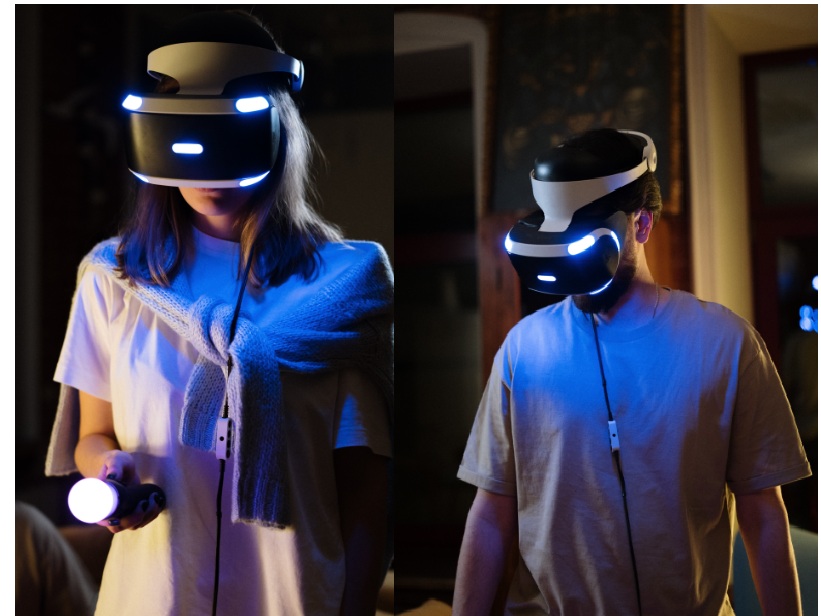
Pimax Next Gen 12K QLED VR Headset! After a spectacular 2017 Crowd funding campaign, Pimax established itself within the Virtual – reality business, promising to provide a super duper field-of-view Virtual reality headset featuring best-in-class resolution, and its own controller and a host of components and consumables.
Whereas the company eventually fulfilled on some of its promises, it did the same with considerable disruptions, quality concerns, and a bewildering assortment of product offerings, which included six different headsets place at a single point.
The business also has neglected to produce other important goods from it’s own Kickstarter, such as its unique bespoke controller, three years just after planned expected delivery.
Virtual world will become more lifelike than before, due to the latest Pimax Next Gen 12K QLED VR headsets. Pimax Next Gen 12K QLED equipment manufacturer, recently revealed the next launch of its revolutionary 12K QLED VR headgear, which includes eye – tracking technology, entire body trying to track, and 200Hz resolution rates.
The Pimax Next Gen 12K QLED is apart of the industry’s Virtual world foray and is a step towards delivering complete authenticity to using virtual reality.
Throughout Pimax Frontier Event, officials from the corporation discussed the manufacturer’s objectives: expressiveness, personality, and independence. Pimax hopes to merge such characteristics throughout virtual reality and the virtual world, allowing individuals from all over the globe to engage and investigate the simulated reality. Virtual reality already is a component of it, but Pimax Next Gen 12K QLED headgear intends to take things to a whole new level.
Pimax’s Gemini technologies would be used in the upcoming headset. The gadget operates on two distinct processors, blending the performance of a PCVR headset that remains attached the all moment with both the independence of a freestanding headset. Nvidia and Pimax next gen collaborated to improve the recognized as an important element of all these headsets. Nvidia’s DLSS, VRSS, DSC, and Cloud XR innovations are stated to be used in the new edition.
Pimax’s proprietary PCVR processor will be the first, and Qualcomm’s Snapdragon VR processor is the second. In independent form, this pairing is aimed to enhance graphic designs and provide the user more options at nearly no expense to performance.
Pimax Next Gen 12K QLED is being marketed by Pimax next gen as a VR headset that makes no concessions. Because of the embedded Snapdragon XR2 chip, the headset is compatible of indigenous, connected PC VR, wirelessly PC VR, and complete freestanding VR.
The headset will also provide surveillance again for head, controller, arms, eyes, mouth, and potentially the parts of the body, thanks to 11 on-board sensors, according to the business.
Pimax reportedly promises a bevy of interchangeable facial expression extensions, including 60GHz WiGig for wirelessly broadcasting, Virtual – reality Localization, augmented reality , 5G, and much more, to increase the headset’s functionality. Third-parties would also be allowed to design their respective components to expand the capabilities of the headgear, according to the business.
The headgear, which would be reported to just be Pimax’s first, supports found that successful to 12K and frame prices ranging between 90Hz to 200Hz in PC VR modes. Also there is a vertical range of vision of 200 degrees (HFOV). The quality goes down whenever utilised in autonomous mode, but never to the extent that users grumble. Wireless frequencies of up to 8K, a maximum segment rate of 120Hz, and a 150-degree HFOV are all available.
Pimax uses Mini LED and QLED technologies rather than just LCD or OLED to create realistic authenticity. Only the most recent MacBookPro uses this technique. The 5,000 tiny LEDs in Pimax Next Gen 12K QLED 5.5-inch screen provide a colour range spectrum, deepest dark, and dynamic contrast.

Pimax also created a bunch of interesting announcements regarding the revolutionary headset, which will have the potential to change the market. According to reports, the new Virtual reality helmet has 11 sensors which capture visual stimuli, facial gestures, arm movements, and sometimes even complete physical movements. Wi-Fi 6E innovation too is stated to be used for frame rate drops broadcasting.
Pimax Next Gen 12K QLED VR Headset
Pimax Next Gen 12K QLED would presumably operate its very own Operating systems such as ios OS, and Pimax would operate its very own storefront to offer indigenous independent material, owing to the headset’s solo characteristics.
Pimax says the freestanding version will indeed be restricted to “8K” definition, 120Hz, and a 150° longitudinal field-of-view (instead of 200° in native PC VR mode). Even so, it would have been remarkable for just about any freestanding Virtual reality headset; there is really no way of knowing for sure the headgear’s 6,000mAh battery will only last, but the company believes it would have been simple to replace.
Pimax touted the forthcoming launch of so-called tiny PC / gaming controllers to operate one such sophisticated VR headset Gaming PC. This equipment, that is only compatible using Pimax technology, is meant to serve as a virtual reality workstation. It’s a transportable alternative for VR lovers, with strong and up-to-date hardware. At this moment, no additional information is available.
Read Also: Apple’s AR/VR Headset Launches in Early 2022
But hold on! There’s even more! The Pimax Virtual reality technology Stations, which is something the business describes as a “system devoted to play Virtual reality headset,” had also been introduced. Despite the lack of details provided by the firm, it appears that the gadget will become a compact form-factor PC capable of running Workstation Virtual environment. The WiGig component for internet transmission is believed to be included in the Pimax Virtual – reality Terminal.
Pimax is always ambitious, however its implementation hasn’t always been up to par. Following navigating rough waters following its Kickstarter campaign and obtaining additional venture capital funding last year, the business appears to just have established a more firm ground, hold to be true its headset options and enhances the performance of its hardware and the software.
Nonetheless, the Pimax Reality “12K” QLED is unquestionably the much more comprehensive Wired headset available on the market, especially with the all the extras and aspirations like the Pimax Virtual – reality Station, its very own independent Virtual – reality Operating system, as well as its own contents marketplace.
In terms of its scope of what was being offered, the latest venture is strikingly comparable to the industry’s Kickstarter. One such revolutionary headset, and everything that will accompany with that as well, is an opportunity for the corporation to demonstrate that it would have grown out of its teething problems.

Full Specifications
| Display | Unspecified “12K” resolution Mini-QLED [estimated 5,760 x 3,240 (18.6MP) per-eye] |
| Refresh Rate | 75Hz, 90Hz, 120Hz, 144Hz, 160Hz, 200Hz |
| Lenses | Compound (aspheric & Fresnel characteristics) |
| Field-of-view (claimed) | 240° diagonal, 200° horizontal, 135° vertical, (118° stereo overlap) |
| Processor | Snapdragon XR2 |
| Wireless | Wi-Fi 6E, optional 60GHz add-on |
| Battery Life | 6,000mAh |
| Optical Adjustments | IPD (automatic motor driven) |
| IPD Adjustment Range | 57–72mm |
| Connectors | Display Port |
| Tracking | Inside-out (no external beacons), optional Steam VR Tracking add-on |
| On-board cameras | 4x head/hand/controller-tracking, 2x eye-tracking, 2x face-tracking, 3x mouth/body-tracking |
| Audio | In-head strap speakers, optional off-ear speakers |
| Microphone | Yes (3x) |






